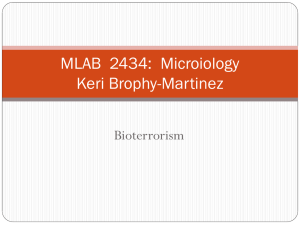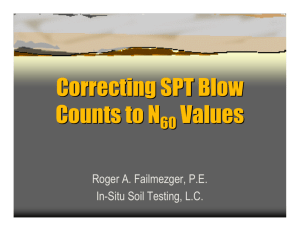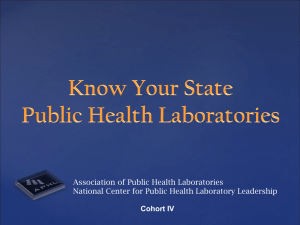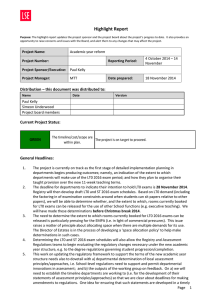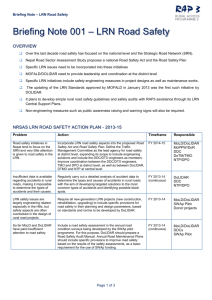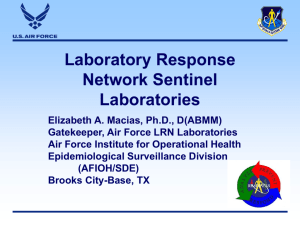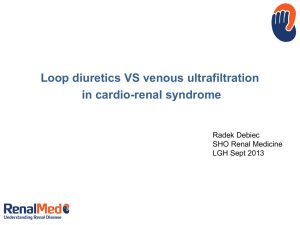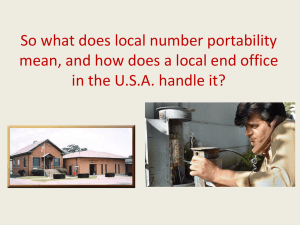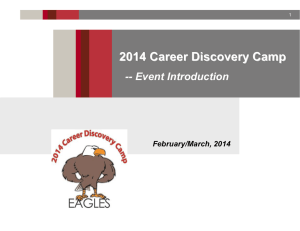CDC Presentation
advertisement
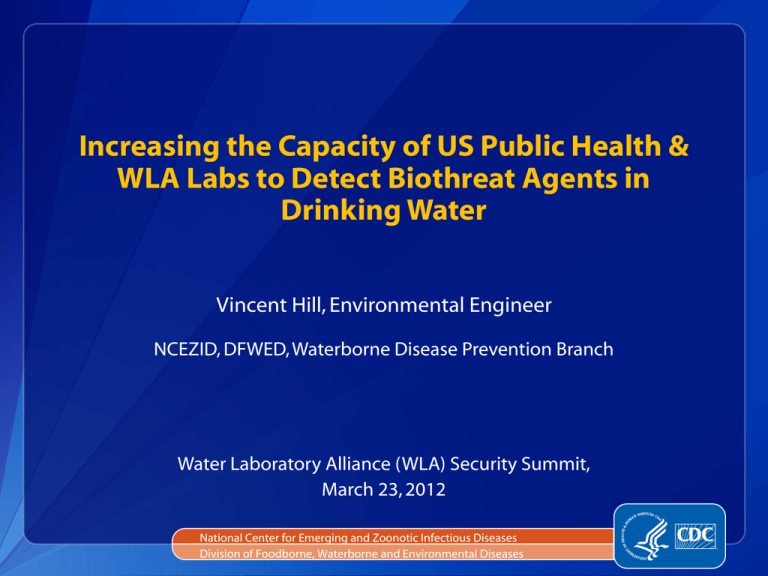
Increasing the Capacity of US Public Health & WLA Labs to Detect Biothreat Agents in Drinking Water Vincent Hill, Environmental Engineer NCEZID, DFWED, Waterborne Disease Prevention Branch Water Laboratory Alliance (WLA) Security Summit, March 23, 2012 National Center for Emerging and Zoonotic Infectious Diseases Division of Foodborne, Waterborne and Environmental Diseases Background US drinking water systems vulnerable to intentional contamination Also source water, treatment, and distribution system deficiencies; premise plumbing issues Priority for public health: Emergency preparedness Ideally, use “universal” method to recover unknown biothreat agent or multiple agents of concern “Ultrafiltration” (UF) fits the bill Pore sizes rated on molecular scale (~1-10 nm) Can recover viruses, bacteria, parasites—even large toxins Commercially available, relatively inexpensive “dialyzers” Hollow Fiber UF Schematic Water Sample • • • • Microbes Suspended solids Colloidal matter Large dissolved molecules UF Membrane Filtered Water (aka “filtrate” or “permeate”) EPA & CDC Collaborating for Water-Related Emergency Preparedness Began collaborating ~2003 on UF methods EPA’s focus: field-deployable instrument Automated UF device developed CDC’s focus: lab-based method for Laboratory Response Network (LRN) Lab-based UF method and associated secondary processing protocol (“LRN Water Processing Protocol”) posted for LRN lab use in 2007 EPA-CDC Study: No overall significant difference in microbial recovery efficiency between the methods (EPA 600/R-11/103, October 2011) LRN Water Processing Protocol 10-100 L Drinking Water Sample Ultrafiltration Centrifugal Ultrafilter (viruses, toxins) Nucleic Acid Extraction Virus Testing (e.g., qPCR) Toxin Testing Membrane filtration (bacteria) Culture Direct Nucleic Acid Extraction Boil PrepqPCR qPCR Tangential-flow Ultrafiltration Centrifugal Ultrafiltration Microfiltration Proficiency Testing Project Primary Goal: Increase number of LRN and WLA labs identified by LRN as proficient to perform the protocol Secondary benefit: Increasing capacity to perform large-volume water sample processing for waterborne pathogens Enrolled 15 labs Workshop and hands-on training at CDC (Atlanta) Method practice at home lab Proficiency Testing Study: April-May 2012 Focus: biothreat agent recovery and detection Also: Use of new Quality Control parameter (E. faecalis recovery %) Acknowledgements EPA Collaborators Latisha Mapp Prisca Takundwa Erin Silvestri LRN Colleagues Stephen Morse Beth Schweitzer Laura Jevitt CDC Project Staff Chandra Schneeberger Jackie Knee Bonnie Mull "The findings and conclusions in this presentation have not been formally disseminated by CDC and should not be construed to represent any agency determination or policy" National Center for Emerging and Zoonotic Infectious Diseases Division of Foodborne, Waterborne and Environmental Diseases
